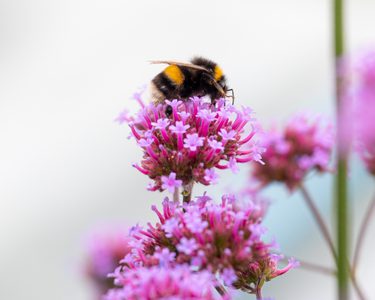New study finds neonicotinoid insecticides linked to wild bee decline across England

Researchers examined changes in the occurrence of 62 wild bee species within oilseed rape cropping patterns across England, between 1994 and 2011 - the time period spanning the introduction of wide-scale commercial use of neonicotinoids.
The decline was, on average, three times stronger among species that regularly feed on the crop, such as Buff-tailed bumblebee (Bombus terrestris), compared to species that forage on a range of floral resources. Thus indicating that oilseed rape is a principle mechanism of neonicotinoid exposure among wild bee communities.
Lead author, Dr Ben Woodcock, said, “As a flowering crop, oilseed rape is beneficial for pollinating insects. This benefit however, appears to be more than nullified by the effect of neonicotinoid seed treatment on a range of wild bee species. Although we find evidence to show that neonicotinoid use is a contributory factor leading to wild bee species population decline, it is unlikely that they are acting in isolation of other environmental pressures. Wild bees have undergone global declines that have been linked to habitat loss and fragmentation, pathogens, climate change and other insecticides.”
Neonicotinoids are a group of insecticides that are applied to seed prior to planting. The active compound is present throughout all parts of the growing plan, including the pollen and nectar. See Neonicotinoids
These findings, led by the Centre for Ecology & Hydrology (CEH), used data provided by Fera Science Ltd and the Bees, Wasps and Ants Recording Scheme, add to previous small-scale and short-term exposure studies which have identified negative effects of neonicotinoids on honeybees and a limited number of commercially-bred wild bee species.
For five of the species investigated, including the spined mason bee (Osmia spinulosa) and the furrow bee (Lasioglossum fulvicorne), neonicotinoid use was equivalent to at least 20% of local population extinctions of wild bees
According to the researchers, the data suggest that neonicotinoid use is correlated with wild bee biodiversity losses at a national scales and has implications for the conservation of bee communities in intensively farmed landscapes. The results add to an extensive body of evidence that will inform the review of the risks neonicotinoid pesticides pose to bees being undertaken by the European Food Standards Authority and anticipated to be complete by January 2017.
Neonicotinoids are just one of the issues important to organic growers that Garden Organic has campaigned on through donations to our Fighting Fund. Please help us continue our campaigning by making a donation today.
Article taken from the Centre for Ecology and Hydrology website - www.ceh.ac.uk